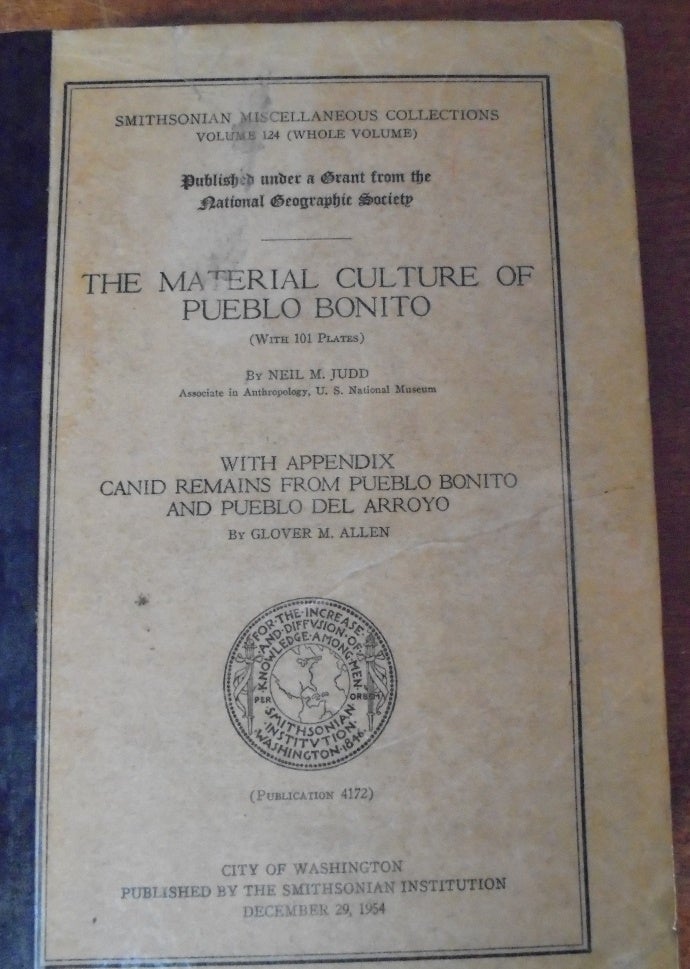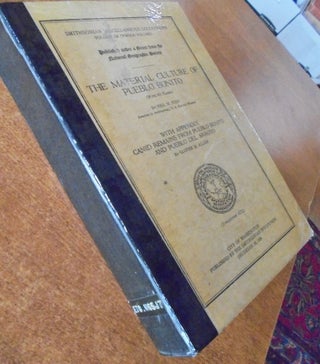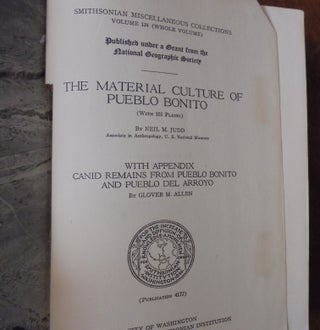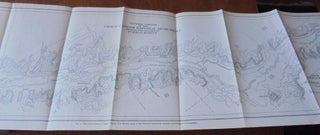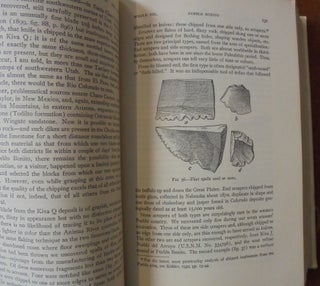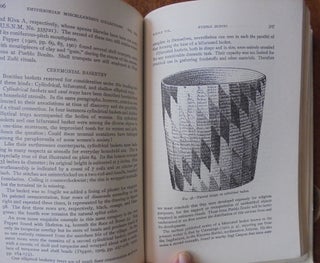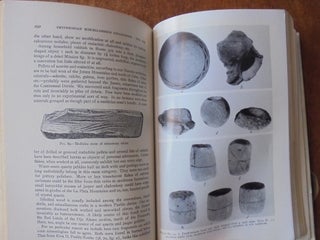The material culture of Pueblo Bonito
City of Washington: The Smithsonian Institution, 1954. Softcover. Tan wraps with black lettering rebound onto boards with black cloth spine. Binding plasticized. xii + 398 pp. with bw frontis, 100 bw plates, and 101 bw figures. Includes a large, folding map of Chaco Canyon. VG- clean and tight but with light wear to corners and thumb darkening at lower outer corner. Art school ex-lib. with usual marks but none to title page. Item #156850
With appendix; Candid Remains from Pueblo Bonito and Pueblo del Arroyo. Smithsonian publication No. 4172. The story of the vanished Indian culture of Pueblo Bonito in Chaco Canyon, New Mexico, set forth in fascinating details in this volume, is the outgrowth of a program of archeological research initiated by the National Geographic Society in 1920. In that year, at the request of the Society's Research Committee, Neil M. Judd, then curator of archeology of the U. S. National Museum, conducted a preliminary survey of the vast abandoned "apartment house" of Pueblo Bonito. Following this survey, and upon Mr. Judd's recommendation, the Society embarked upon an extensive program of excavations from 1921 through 1927 which produced the material for this report. Mr. Judd's painstaking investigations have made it possible to reconstruct to a remarkable degree the everyday life and culture of the people who lived in Pueblo Bonito approximately 1,000 years ago. These prehistoric Indians inhabited the site at least as early as A.D. 919, and attained their "Golden Age" after A.D. 1000, about the time of the Norman conquest of Britain and the First Crusade. They continued to occupy the Pueblo for at least another century; then some 300 years before the coming of Columbus they disappeared without trace. Our detailed knowledge of the actual dates when Pueblo Bonito was occupied was furnished by two other expeditions of the National Geographic Society, in 1928 and 1929, led by Dr. Andrew Ellicott Douglass, director of Steward Observatory at the University of Arizona. Dr. Douglass was engaged at that time in the study of climatic cycles as revealed in the varying thickness of the annual growth rings of trees, and the possible relation of such cycles to the 11-year sunspot cycle. Dr. Douglass made careful measurements of the growth rings in logs used as supporting beams in the Pueblo Bonito structures, and then was able to fit them into an unbroken sequence of tree rings extending back into the past from the present day. Thus he was able to establish the dates when many of the Pueblo Bonito beams had been cut from living forests. His monograph, "Dating Pueblo Bonito and Other Ruins of the Southwest," appeared in 1935 as the first of several papers presenting the scientific results of the Pueblo Bonito expeditions. (from Forgotten Books, publishers of the more recent reprint).
OCLC: 18757020
Sorry, this book is not available.
Notify me when this comes back in stock.


